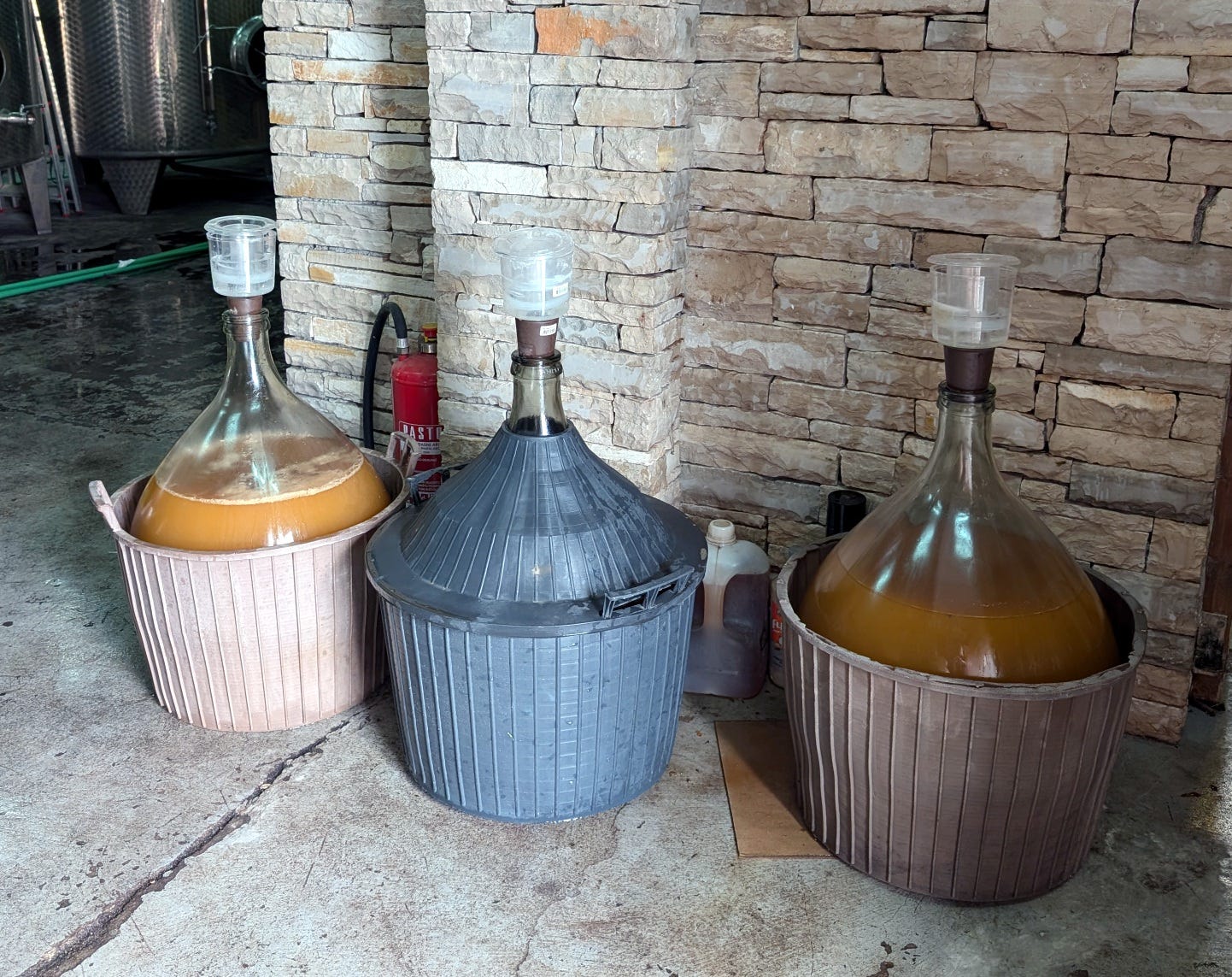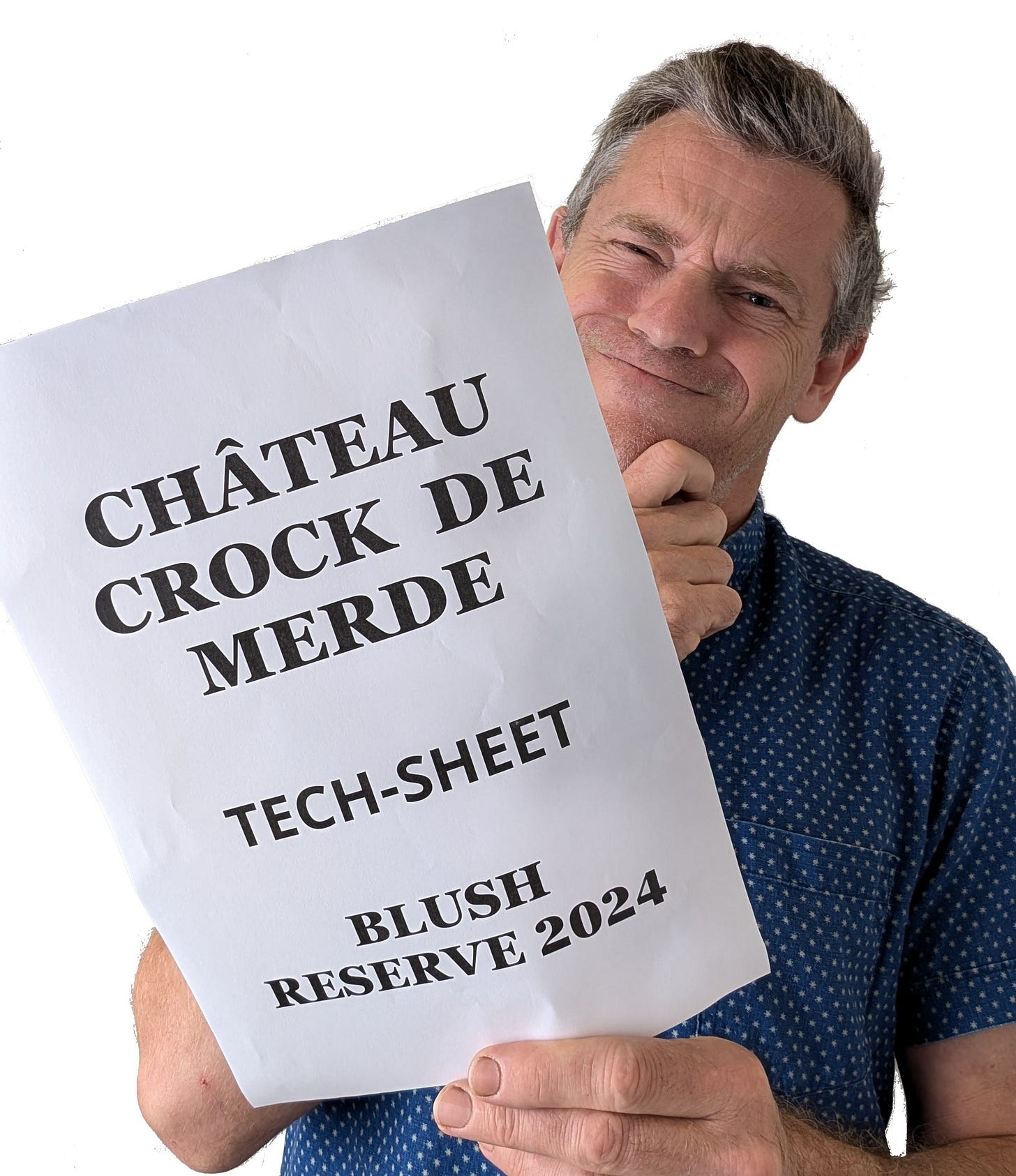The Wine Tech-Sheet Bullshit Buster
What they say and what it really means
Here’s how to save on wine education: cancel that WSET diploma course or your participation in the Master Sommelier programme, and go work a harvest instead. You’ll learn more in a week than in a life-time’s classroom study.
This is the sharp end of wine, when the reckoning for a whole year’s work is compressed into a rollercoaster of split-second decisions. Everything happens on the fly, and solving logistical challenges suddenly becomes way more important than soil-types or radical philosophies on sulphur.
Merlot’s law states that every wine cellar is too small during harvest. Suddenly, room has to be made for the destemmer, the crusher, the sorting table and the futuristic new concrete eggs the owner decided to buy. Chaos reigns, the flow of full crates is unending and someone has a find a place to keep those grapes cool, to stop them fermenting, to start them fermenting, to get them out the way for the next batch. It’s literally a case of rinse and repeat for a frantic few weeks. Then everyone takes a deep breath and looks forward to a few months without sleep deprivation.
Nine months or more later, the results will be bottled. Then someone has to come up with the details for the tech-sheet - the fiche-technique to make it sound fancy and French. Here’s where the fun starts.
Tech-sheets are there to keep importers, distributors, sommeliers, journalists and other assorted wine geeks happy. They’re a legal necessity in some markets. Most of the time, they’re a convenient way to stem the flow of inane technical questions. Are you a wine writer, critic or blogger? Remember when your life depended on the exact assemblage for Chateau Crock de Merde’s 2022 Blush Reserve? So you msg-bombed the winery via their TikTok account and carrier pigeon to get the answer.
Enter the downloadable tech-sheet, the answer to your deadline-tormented prayers, the provider of absolutism and the resolution to all those late-night arguments about whether the 2022 was destemmed or not. Because it’s important.
I have to break it to you. Tech-sheets are not absolute. No-one is saying that winemakers lie, it’s more that the truth lacks precision. Large cooperative producers weigh grapes as they are delivered. Few smaller estates do. Calculations are done quickly in someone’s head. There are 50 crates of grapes stacked up, so that must be approximately one tonne. Approximately because not everyone puts exactly 20Kg in their crate. 22 of the crates came from a vineyard containing mostly Merlot, apart from the vines where the nursery sent the wrong variety or the pickers forgot to select it out. So we’ll say the blend has 40% Merlot. Even if it might be 30% or 50%.
Tech-sheets also get copy-pasted between years. If no-one can remember exactly what happened in the 2015 vintage, the details have to be reverse-engineered or otherwise manufactured. Chances are it was similar to 2016.
The perfect winemaker keeps a complete logbook of all their fermentations, with start and end times, along with sugar and alcohol levels for every day. I’ve never met this person. If you also happen to double as grape picker, childcare manager and chief hygiene operative, you might miss the odd day or ten. So how long was that skin fermented Viognier actually on the skins? Probably it was two weeks. Maybe 12 days. Maybe more.
Remember those classic Bordeaux labels with 12.5% alcohol written on the front label? Those were the good old days when it never changed - isn’t chaptalisation a wonderful thing. Or maybe it wasn’t always exactly 12.5%. I know a Georgian producer who once had their Saperavi ferment spontaneously to over 18%. It was deemed unpalatable for the label, which more politely claims 14.5%.
Ultimately, the tech-sheet is best seen as a compromise between what really happened and what sounds good on paper. With that in mind, I proudly present:




